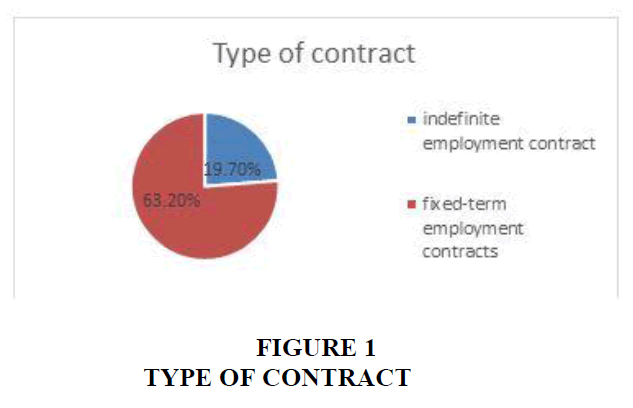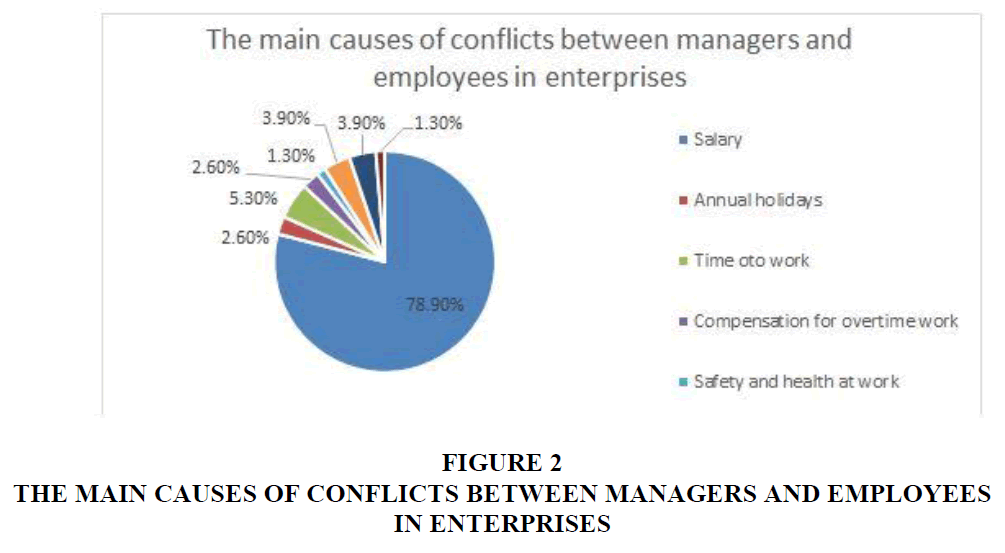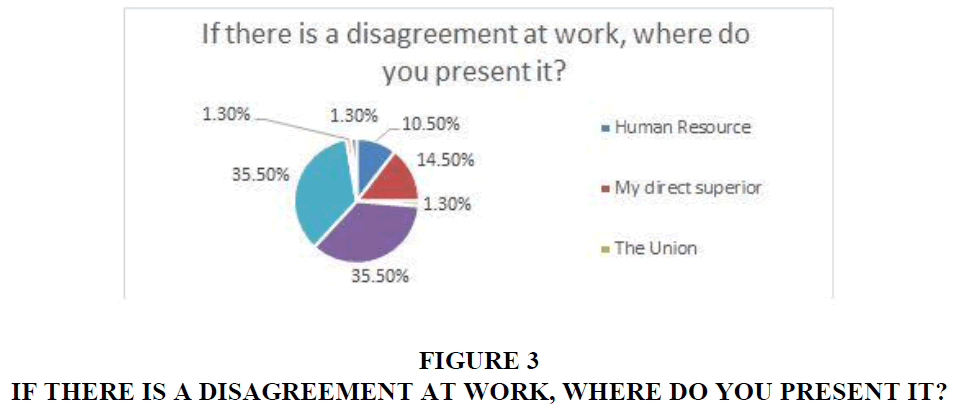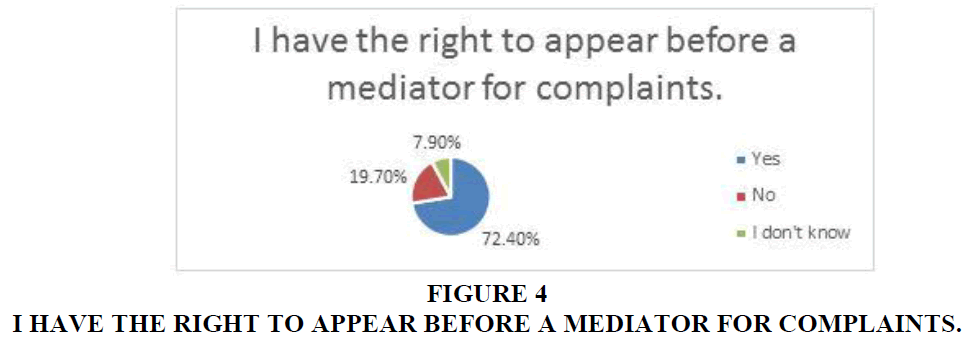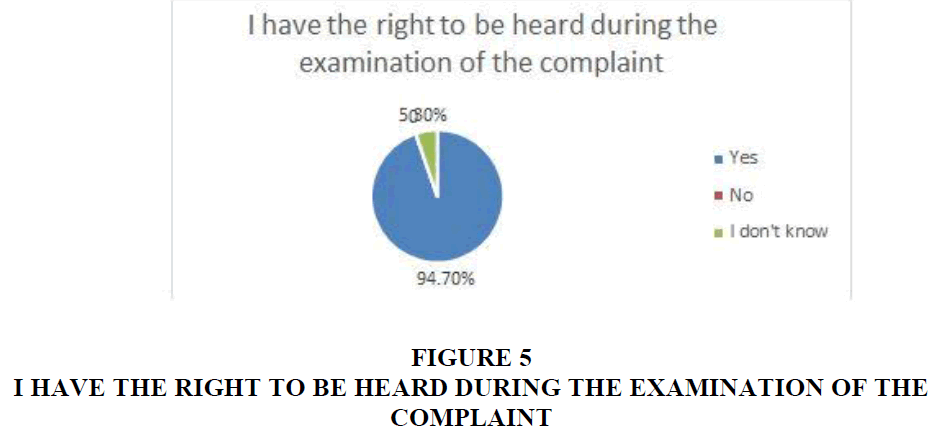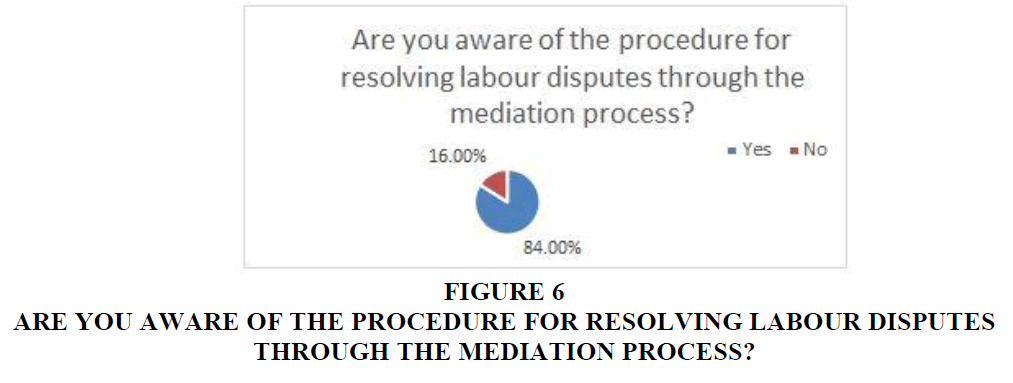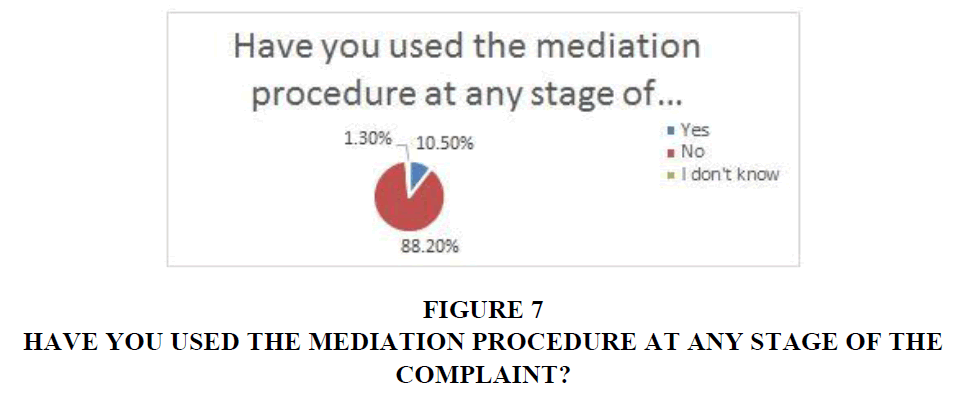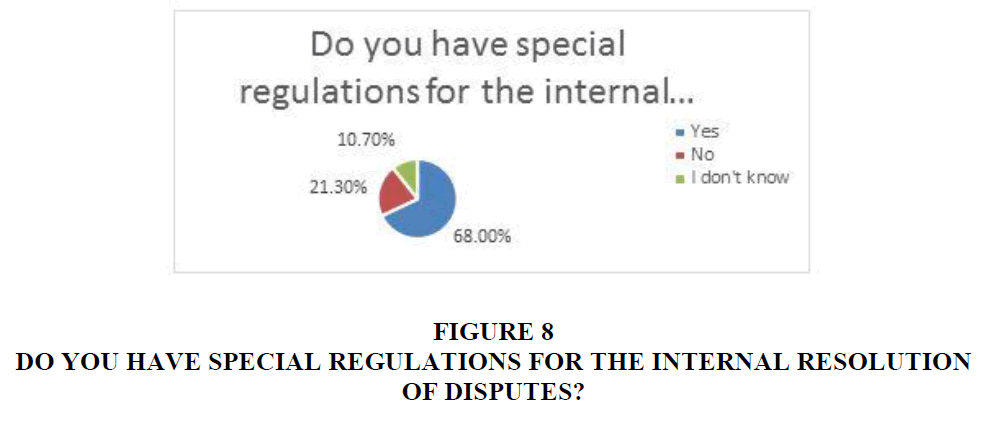Research Article: 2025 Vol: 28 Issue: 2S
Resolution of Workplace Dispute According to the Acts of the International Labour Organization and Albanian Legislation
Inva Koçiaj, University of Tirana
Xhenis Sina, University of Tirana
Citation Information: Koçiaj, I., Sina, X., (2025). Resolution of workplace dispute according to the acts of the international labour organization and Albanian legislation. Journal of Legal, Ethical and Regulatory Issues, 28(S2), 1-16.
Abstract
Establishing a robust legal framework focused on creating a comprehensive system for effective workplace dispute resolution is essential to promote safe and equitable working conditions in Albania. The workplace is often subject to rapid social, economic, and legal changes, influenced by the inherent dynamics of labour relations. The anticipation and formalization of procedures for dispute resolution can significantly enhance labour relations, boost productivity, and reinforce respect for employee rights. Recently, the International Labour Organization introduced several legal instruments and indicators to address workplace conflict and uphold the principle of decent work. These international standards, particularly those concerning dispute resolutions, serve as a guiding framework for Albania to improve its legal and administrative mechanisms within domestic legal frameworks. This article analyses the current Albanian legislation, identifies existing challenges, and highlights legal gaps. Using a quantitative methodology, it examines empirical data collected through surveys distributed across numerous Albanian companies to assess the state of workplace dispute management, employee awareness of the legal framework, and the extent of the law implementation.
Keywords
Dispute Resolution, Mediation, ILO Standards, Decent Work, Albanian Legislation.
Introduction
Dispute resolution in the workplace is one of the most critical aspects of managing labour relations, which directly impacts job productivity, employee well-being, and the economic stability of a society. Conflicts in the work environment are inevitable due to the natural divergences that may arise between individuals and groups with differing interests, positions, and roles. This phenomenon can encompass issues of a financial, organizational, political, or personal nature and can significantly affect the work atmosphere, employee motivation, and, consequently, the performance of an institution or company. In this context, the importance of effective mechanisms for dispute resolution is undeniable. Legal systems and alternative dispute resolution procedures, such as negotiation, arbitration, and mediation, offer opportunities to address and manage these conflicts fairly and impartially. These possibilities of resolving conflicts or disagreements that arise in the work environment, help to avoid long and costly legal processes, offering an opportunity to reach an agreement that is acceptable to all parties involved.
In this paper, we intend to address the legal concept of labour disputes, focusing on Albanian legislation, the identification of legal gaps and gaps in the Albanian legal framework, and the lack of effective implementation of alternative methods of resolving labour disputes. Also in this paper, the latest indicators drawn up by the International Labour Organization about the resolution of labour disputes, as well as the international standards drawn up by the ILO, are analyzed, how many of them are part of the Albanian legislation and the need to align the national legislation with the acts international. Lastly, but very important, this article will present the empirical findings collected from the distribution of a questionnaire to 100 private companies that operate with a significant number of employees.
The research aims to examine employees' and employers' knowledge of national and international legislation governing labour relations and dispute resolution, including the principles of fairness and transparency, which are essential to guaranteeing a fair working environment. An important part of the analysis is the assessment of the implementation of labor laws, as well as the implementation of the mechanisms provided by the law for the resolution of conflicts, such as arbitration and collective negotiations. This study aims to identify potential legal and administrative barriers that prevent the full implementation of the legislation, as well as suggest ways to improve its understanding and application by both parties, employees and employers. In general, conflicts at work are resolved verbally, leading to a deterioration of relations and the situation at work. This is further followed by unfair dismissals, but also in the creation of some standards that openly violate human rights at work and the international principle of decent work.
The creation of effective processes, that would prevent and resolve disputes at work, began to take on special importance for minimizing the occurrence of negative consequences in the workplace. The International Labour Organization has been the initiator of handling, developing, and issuing a series of legal acts of special importance, for the creation of a basic pillar for the resolution of disputes at work. The national legislations are the ones that will deal with it in more detail and specifically respect other legal acts to have the proper procedure for resolving disputes at work.
Internal Resolution of Labour Disputes and Compliance with Albanian Legislation
The internal resolution of disagreements at work is an essential process for maintaining social peace, promoting social dialogue, and creating a sustainable work environment. In Albania, this solution is mainly based on dialogue and consultation between employees and employers, respecting the principles defined in the Labour Code1. Labour disputes are categorized into two types, rights-based and interest-based disputes or individual and collective disputes2. Disputes based on rights are those disputes related to the rights and legal obligations provided for in labour legislation, collective contracts, or individual labour contracts. These types of disputes are often individual and can be resolved through court proceedings or before the authorities charged with the powers to deal with these issues. The resolution of these conflicts usually requires the intervention of the courts, which decide in favour of one of the parties involved. Some examples of these disputes include unfair dismissal, discriminatory practices in the workplace (Spielmans, 1939), non-compliance with collective agreements, violations of occupational safety and health regulations, and incorrect procedures in handling disciplinary measures or complaints3.
Disputes based on interests are those disputes that are directly related to collective contracts or the laws that are in force. Their goal is to achieve better working conditions, and recognition of new rights, thus offering new alternatives to regulate labour relations. In most cases (Ebisui et al., 2016), disagreements based on interests are collective disagreements and are resolved through the process of collective bargaining4. Examples of disputes of this category are collective negotiations for the regulation of the duration of work, leave or annual leave, employment conditions, wages, or other benefits5. Individual disputes include labour disputes involving a single worker, while collective disputes involve groups of workers usually represented by trade unions6.
If we interpret the legal provisions in the Labour Code in Albania, which provide for the handling of complaints and disagreements at work, we will notice that there is a lack of a legal definition of what is an individual disagreement at work, leaving room for the creation of a legal gap (Avgar, 2020). The Labour Code is the legal act that serves as the main regulator for the labour relationship, providing the rights and obligations for the employee and the employer. This legal act also provides concrete legal provisions that legally regulate disputes that arise in the workplace. From research of the predictive provisions in the Labour Code in Albania, it is immediately noticed the lack of a detailed provision to regulate all types of disagreements that arise in an employment relationship. The resolution of disputes at work is still not properly addressed both in doctrinal and procedural aspects. The Albanian legal framework, which deals with the internal resolution of disputes at work, is deficient. Specific accompanying procedures and proper knowledge of Albanian employees regarding the resolution of conflicts at work are also missing. More specifically, article 188 of the Labour Code of the Republic of Albania, it is defined that:
“Collective conflict means any conflict between several employees, one or several trade union organizations, on the one hand, and one or several employers or one or several employer organizations, on the other hand".
In Article 172 of the Labour Code, it is clearly defined that the competent body for the resolution of individual or collective disputes related to the implementation of the collective contract at work is the Court. In cases where one of the parties to the collective agreement does not respect its provisions, the other party has the right to turn to the court or the arbitration court in case the latter is provided for in the collective agreement. Collective conflict must include collective rights or interests such as safety conditions, working hours, wages, annual leave, etc. The dispute may arise at the individual level and turn into a collective conflict, for example when an employee is fired because he is a member of a trade union organization. This conflict is both individual and collective. According to Albanian legislation, in cases where the parties to collective conflicts at work do not want to resolve these conflicts in court, the legislation provides for the possibility of alternative solutions to conflicts at work, such as mediation, conciliation, and arbitration. Also referred to, article 1657, of the Labour Code, in cases of resolving disputes through collective bargaining, none of the parties can use the right to strike, without using the other means also provided for in the Labour Code, such as mediation, the conciliation office, and if the parties reach an agreement, they can also use the arbitration court. Mediation, conciliation office, and arbitration are provided as some of the ways of resolving labour disputes, based on the provisions of the Labour Code. The legal framework is accompanied by other by-laws issued by the responsible Ministry or by state institutions. One of the main gaps is the lack of a clear and efficient system for the resolution of individual and collective disputes, which are provided for in the international acts of the International Labour Organization8. Although the Labour Code and other by-laws provide for the possibility of using mediation and arbitration to resolve labour disputes, often the handling of complaints is not carried out properly.
In addition, there is a lack of knowledge and adequate preparation on the part of employers and employees on legal procedures for conflict resolution, leading to a high degree of non-enforcement of labour rules and an increase in unresolved disputes. These deficiencies create an uncertain legal environment and often undermine balance and fairness in labour relations. The ILO has developed a broad set of international standards related to workers' rights and conflict resolution procedures, which are fundamental to a sustainable and fair system (ILO, 2023). The integration of these standards into Albanian legislation would improve the efficiency of the dispute resolution process, providing a clear and accessible mechanism for employees and employers.
Instruments and Legal Acts of the International Labour Organization for the Resolution of Labour Disputes
Since 1919, the International Labour Organization has established and developed a system of international labour standards aimed at promoting opportunities for women and men to obtain decent and productive work in conditions of freedom, equality, security, and dignity9. The legal, institutional framework in the context of the ILO system is based on a set of three basic principles: a) prevention of labour disputes; b) in the case of the inevitability of a labour dispute - guidance on its internal solution; c) in case of need (Heron et al., 1999) – involvement of a third party10. Through legal actions, ILO has created a set of important standards that can be taken into account for the creation of effective dispute management systems, including, mainly, elements such as, focus on conflict prevention, diversity of services and interventions, provision of services free of charge, the possibility of participation, volunteering, using an informal approach, encouraging inJanation, ensuring professionalism (ITC-ILO, 2013), maintaining independence, sufficient resource support, and creating trust and credibility among users11.
In 1951, the International Labour Organization adopted Recommendation No. 9212 dealing with voluntary conciliation and arbitration for the resolution of collective disputes at work. This recommendation encourages the use of conciliation and arbitration mechanisms as tools to resolve conflicts between employees and employers, providing a framework for the use of peaceful methods to resolve disputes and avoid the intervention of state authorities in these matters. The recommendation emphasizes, among other things, the importance of preventing disagreements at work.
Paragraph 1 of Recommendation No. 92 stipulates that the method of conciliation and arbitration must be voluntary, ensuring that both parties, employees and employers, agree to use this process to resolve conflicts. These methods must be suitable for the national conditions of ILO member countries, which must implement these methods in their internal legislation, to prevent labour disputes. Article 3 of Recommendation No. 92 foresees some effective methods for preventing disagreements at work, such as dialogue and direct negotiations between employers and employees. The immediate use of such methods affects the prevention of disputes at work and their further aggravation. The use of conciliation mechanisms, focus on collective negotiations, work agreements, joint training, consultation, and negotiations, are alternatives provided in this legal act, to deal with labour disputes with a preventive effect.
Recommendation No. 130 of 1967, also known as the complaint handling recommendation, aims to handle disputes at the enterprise level, including both individual and collective disputes. defines the complaint as a situation or measure that affects, or may affect, the conditions of an employee or employees, when this situation or measure conflicts with the collective contract in force, the individual employment contract of the employee, internal labour regulations, laws or regulations, as well as professional habits of work or place of employment. Such may be harassment, bullying, discrimination, non-compliance with occupational safety and health protocols, non-compliance or non-payment of benefits, refusal of the employer to grant days off, etc. From the point of view of handling disputes in the workplace, it should also be noted that not qualifying as a grievance of a dispute does not mean that this dispute should not be resolved.
In Article 2 of Recommendation no. 130 of the ONP, it is provided that regardless of whether the grievance procedure is provided for in the company's internal regulations or the collective agreement, every employee has the right to file grievances and participate in the process, without being prejudiced or without consequences. However, the best way is for the grievance redressal procedure to be formalized in a policy document or regulation that guarantees their proper, fair, and efficient handling and review. This prevents any escalation of disputes in the workplace and creates an enabling environment in the workplace. So this recommendation is considered one of the general principles, which establishes the basis of the right to complain and, above all, of handling the complaint based on an open procedure, without prejudice, and effectively for all employees13. A complaint according to Recommendation No. 130 is a measure taken or a situation created, that affects or may affect the conditions of one or several employees when this situation or measure taken contradicts the collective contract in force, the individual contract of employees, the internal work regulations, or with professional habits at work. Such situations can be harassment, discrimination, non-compliance with safety and health protocols at work, non-compliance or non-payment of benefits, refusal of the employer to grant days off, etc. Even if a dispute is not considered a cause for complaint, it does not mean that this dispute should not be resolved. Disputes related to values, personality, or power/structural disputes can hurt the workplace, the people involved, and in some cases others around them. Disputes have different natures, including disputes of an individual nature based on the rights provided for in the contract or law, as well as disputes of a collective nature based on interests that are the result of efforts to create new rights or change those existing. What is advised in internal cases of disputes is to resolve them based on internal procedures, before submitting to an external resolution. As an external solution here we will mention mediation, external conciliation, or even a solution through a court or arbitration court.
Article 714 of Recommendation No. 130 emphasizes the importance of resolving complaints within the company, that is, where the conflict or disagreement has arisen. The creation of an efficient internal procedure for the resolution of disputes at work leads to more effective treatment, regardless of whether or not the complaint procedure is provided for in the internal regulation of the enterprise or the collective agreement. So even in cases where the procedure to be followed for the handling of the complaint is missing, this is not a reason for denying the right of the employees to file a complaint. The right to appeal is a fundamental right that must be addressed in every case and without prejudice.
Among the best ways to handle complaints is to formalize their procedure, this means drafting a regulation that guarantees proper, fair, and efficient handling and consideration of a complaint. This procedure must be understandable by all employees, it must contain all the links that are followed for its treatment. The procedure should contain the structure, which will receive and handle the complaint (Baffi et al., 2023). Another important element is the fact that companies must define procedures for situations of discrimination and harassment in the workplace. As a result, it is necessary to design and predict the procedure for handling employee complaints, and to have a proper management of conflicts that arise15.
Convention No. 190 approved by the ILO in 2019, is an international act that deals with violence and harassment at work and provides a legal framework for countries that have ratified it, to adopt legislation and policies that prevent and stop violence and harassment in the country of work. The Convention aims to protect all workers and ensure a safe and healthy working environment. Article 1 of Convention No. 190 defines violence and harassment in the workplace, providing for the protection of employees from any form of violence and harassment or behaviour that damages, threatens, or offends the dignity of employees, including physical violence, sexual and psychological. Article 1016 of Convention No. 190 obliges all member states, that ratify this convention, to take effective measures so that all victims have safe, fair, and effective access to mechanisms and procedures for reporting and resolving disputes in cases of violence and harassment in the world of work.
The Role of the Collective Contract in Resolving Disputes at Work
The collective contract provided for in Article 15917 point 1 of the Labour Code provides for special provisions on employment conditions, connection, and content as well as for the termination of the individual employment contract. Also, the collective agreement contains provisions on professional training and the relations of the contracting parties. All these, included in the collective contract, play a very important role, not only in the provision of legal norms but above all in the orientation and implementation of this contract in the resolution of disputes at work. The collective agreement can be seen as an open field where both parties, such as the employees represented by the union and the employer, are free through dialogue to write any provision that protects their position at work. Among the main issues that are discussed or negotiated between unions and employers are: safety and health at work, paid annual leave, maternity leave enjoyed by both sexes, wages and other benefits, duration of leave and duration of work, measures and disciplinary procedures, amicable settlement of labour disputes arising during collective bargaining, training and retraining of employees, minimum services in case of strikes in important services vital.
The collective contract has always been defined as a legal remedy with superiority over the individual labour contract; this comes as a result of the provision of higher standards in the collective contract than in the individual labour contract. The provisions provided for in a collective agreement cannot contain provisions less favourable than the Labour Code. In a collective contract, work conditions are provided that are of mutual interest in an institutionalized and structured environment (Owoseni et al., 2014). Also, the collective contract is a genuine promoter of democracy in the workplace and employee participation in managerial decisions18. The International Labour Organization, through legal instruments, has contributed to the creation of an effective legal framework for member countries to use collective contracts in the appropriate form for the resolution of labour disputes. Convention No. 9819 focuses on the rights to organize and collective bargaining. It supports workers and trade unions in their efforts to improve working conditions and prevent discriminatory actions by employers. The Convention does not directly provide a provision for the settlement of disputes but supports opportunities to help resolve conflicts through collective bargaining mechanisms and the protection of the rights of employees and trade unions. Convention No. 154, which deals with collective bargaining at the work level, promotes the development of effective collective bargaining practices between employers and employees.
This convention was adopted in 1981 and aims to strengthen social dialogue and ensure that workers have the opportunity to negotiate collectively with employers for better working conditions. Article 6 of Convention No. 154, even though it focuses on collective negotiations, should not be interpreted that this provision aims to exclude the use of conciliation and/or arbitration as part of the negotiation process where such processes are voluntary. Article 5 paragraph 2(e), provides that the bodies and procedures for the resolution of labour disputes must be designed to contribute to the promotion of collective negotiations. One objective of dispute settlement is indeed to promote the mutual settlement of differences between workers and employers and, therefore, to promote collective bargaining and the practice of bilateral negotiations20. Consequently, we understand that the ILO, through these legal instruments, promotes collective negotiations as the main tool for resolving disputes between employers and employees. The Convention supports the ideology of social dialogue and encourages the creation of conditions for the development of a sustainable and honest negotiation process between the parties, which will lead to the achievement of fair and balanced agreements.
Recommendation No. 168 of the ILO is closely related to Convention No. 154, which deals with the termination of employment relationships and provides guidelines for creating conditions that can ensure stable employment and resolve disputes between employers and employees effectively and directly. The recommendation emphasizes the importance of collective bargaining and social dialogue as key tools to resolve disputes and ensure a just and peaceful solution. It suggests that stakeholders, including unions and employers, should engage in ongoing dialogue to address issues that may lead to disputes, including workers' rights, working conditions, and other collective agreements. Article 12 of Recommendation No. 168 emphasizes the importance of using conciliation and arbitration to resolve disputes arising from labour relations, especially those related to collective and individual disputes21.
The recommendation encourages the creation of favourable environments for the reconciliation of the parties and the use of arbitration to ensure impartial and fair solutions to conflicts that may escalate
Decent Work and Internal Resolution of Labour Disputes
Decent work is a concept widely addressed by the International Labour Organization. The concept of Decent Work is based on the respect of fundamental rights at work, such as freedom of organization and the right to collective agreements, the prohibition of forced labour, the prohibition of child labour (Vosko, 2002), the prohibition of discrimination at work and in the choice of profession, as and social protection and social dialogue22.
“Decent work is defined by the ILO and accepted by the international community as productive work for women and men under conditions of freedom, equality, security, and human dignity. Decent Work includes opportunities for work that: is productive and provides a fair income; provides workplace safety and social protection for workers and their families; offers prospects for personal development and encourages social integration; gives people the freedom to voice their concerns, organize, and participate in decisions that affect their lives; and guarantees equal opportunity and equal treatment for all23”
In 2023, Albania adopted the current national Decent Work Program 2023-202624. This is the sixth decent work program, signed and implemented in cooperation with the Albanian government and the social partners of the ILO in Albania. The priorities of this program are: a. Effective protection at work; b. Comprehensive and productive employment; c. Improved social dialogue. In February 2022, the Albanian parliament ratified Convention No. 190 "Elimination of violence and harassment in the world of work25". Convention No. 190 has been defined as the first standard in the world for the prevention of violence and harassment at work. From the moment of ratification, it is the responsibility of the Albanian state to take measures for the implementation of this convention in labour legislation; its implementation in the Labour Code, and other by-laws to have the best possible implementation of the Convention no. 190 in practice. The International Labour Organization sets the task for the Albanian government to draft a proper legal framework regarding the implementation of alternative means for resolving disputes at work, both for individual and collective conflicts. The Labour Code provides in Article 16526 methods of conflict resolution, mediation, conciliation, or negotiation, but does not include the resolution of individual conflicts, except to go to a private mediator or court. If you go to court, most likely the case will take time to be resolved, due to the burdens that the courts currently have in Albania. By the basic principle of Decent Work, it is necessary to immediately take measures to implement in practice a genuine legislation for resolving conflicts at work and this normally requires legal intervention in the Labour Code27.
The Role of the ILO in the Republic of Albania in the Creation of New Standards for the Resolution of Labour Disputes
The International Labour Organization has a direct impact on the development of the juridical system of our country and catalyzes the development of the economy and the basic rights of employees in the relevant fields. Albania is one of the member countries, as well as a ratifier of many conventions related to work, drawn up by ONP. The International Labour Organization has as its goal the promotion of social justice, the fundamental rights at work recognized internationally, the creation of policies to ensure greater employment to increase the standard of living, ensuring wages at a level that covers living costs, the right to collective bargaining and others rights. The ILO has a long history of assisting member countries in the areas of dispute prevention. The assistance consists of the drafting of international standards related to the prevention and resolution of disputes and the monitoring of their implementation, the provision of technical advice, and assistance in the establishment and strengthening of legal frameworks. A legal tool that implements precisely the standards drawn up by the ILO is the conventions aimed at preventing and resolving disputes at work. Albania is one of the member countries of the ILO, which has ratified most of the conventions drawn up by it (ILO MANUAL, 2013). Recently, our country ratified Convention No. 190 "Elimination of violence and harassment in the world of work", in February 2022, taking on a new task, that of implementation in national legislation to make possible the implementation of the convention.
An important moment in the objectives of ILO is monitoring the implementation of the principle of decent work28. ONP achieves this through decent work indicators. The ONP's Declaration on Social Justice for a Fair Globalization recommends the establishment of appropriate indicators to monitor progress made in implementing the ILO's Decent Work Agenda. The ILO is supporting member states through technical assistance and capacity building at national, sub-regional, and regional levels in this regard29. If we look carefully at the indicators of decent work, none of the indicators, the resolution of disputes is not foreseen or addressed, even though this is one of the future goals of the ILO, to further expand it as an element and make it part of one of the indicators.
The Meaning and Current Situation in Companies in Albania Regarding the Resolution of Labour Disputes
This study examines workplace dispute resolution in Albanian enterprises based on data from a questionnaire designed to assess employees’ knowledge of relevant legislation and the processes for managing disputes in their workplaces. The questionnaire comprised 23 questions and was distributed to 76 employees from various enterprises in Tirana to provide insights into the current level of awareness and practical approaches to conflict resolution in the workplace. The research adopted a qualitative approach, in Figure 1, with findings indicating that 63.2% of respondents have fixed-term employment contracts and work full-time, while 16.2% reported having indefinite-term contracts. These findings shed light on the types of employment arrangements that are common among respondents, which may influence their experiences and perspectives on workplace dispute resolution practices (Figure 1).
Based on responses from employees who completed the questionnaire, the primary workplace issue is inadequate pay, which was cited by 78.9% of participants. This was followed by concerns over working hours or work duration (5.3%) and unsatisfactory work performance (3.9%). These responses reflect the reality in Albania, where low wages, especially in the private sector, remain a significant concern for workers. In response, the Albanian Council of Ministers recently approved an increase in the minimum wage to improve the living standards of workers across the country (Figure 2).
About working hours, certain entrepreneurs disregard official working schedules, thereby compelling employees to work beyond designated hours. Furthermore, in more demanding periods, these employers frequently neglect to provide compensation for overtime work. The findings from the survey also indicate that another significant issue is annual leave entitlement. In several companies, employees are not granted the full 28 days of leave stipulated by the Labour Code; instead, they typically receive only two weeks of leave throughout the entire calendar year.
Concerning the avenues pursued by employees during workplace disputes, data from the questionnaire reveals that 35.5% of respondents indicated that they would first approach the company director or the company administrator, with both options rated equally. Furthermore, 14.5% of employees reported directly addressing their immediate supervisor while 10.5% sought assistance from the human resources department. A minority of 1% indicated that they would turn to the trade union, or the Co-operation Committee at work or submit their concerns anonymously through a suggestion box within the organization (Figure 3).
Concerning the complaints submitted by employees and the role of the union in this process, approximately 86.8% of respondents indicated awareness of their right to address grievances to the designated body specifically established for complaint resolution. Additionally, employees reported that they were informed of the responsibilities undertaken by the union to which they belonged in facilitating and managing the complaints they raised. Employees also expressed their understanding of the mediator's role in conflict resolution within the workplace. Notably, 72.4% acknowledged their right to file a complaint with the designated mediator at their respective organizations, while 19.7% were unaware of the mediator's function. Additionally, 7.9% of employees indicated a complete lack of knowledge regarding the existence of a mediator (Figure 4).
Regarding the procedure for reviewing complaints, the data collected from the questionnaire indicates that employees are aware of their rights to participate in the complaint review process, to be heard during this process, and to receive a written decision regarding the outcome of their complaint (Figure 5).
Concerning the option of filing complaints through mechanisms external to the company, the data gathered indicates that 71.1% of respondents believe they possess the right to seek recourse through alternative channels for the review of their complaints. Conversely, 21.1% expressed that they do not hold this right, while 7.9% reported being uncertain about their entitlement to pursue such avenues. Despite the majority of surveyed workers indicating an awareness of external mechanisms for workplace dispute resolution, figure 5, reveals that a remarkably small number have opted for these external resolution processes.
The mediation procedure is one such method for resolving workplace disputes, with 84% of respondents indicating familiarity with it. However, a significant 88.2% stated that they had never utilized this method of conflict resolution while only 10.5%, acknowledged that they had employed mediation as a means to address workplace disputes (Figure 6) & (Figure 7).
Figure 6 Are you Aware of the Procedure for Resolving Labour Disputes through the Mediation Process?
Collective contracts and labour regulations should incorporate specific provisions about the management and resolution of workplace disputes. The procedural rules must outline in detail the comprehensive procedures to be followed in the context of workplace conflicts. When queried about the existence of internal regulations within their organizations, 68% of respondents affirmed the presence of such regulations, while 21.3% indicated that no internal regulations exist, and 10.7% expressed uncertainty regarding the existence of such regulations (Figure 8).
If the regulation is provided by the employer or the union, 89.7% of employees reported that it was indeed made available to them. When asked about the effectiveness of the internal dispute resolution procedure, 60 participants affirmed its effectiveness, while only four indicated it was not effective. The final two questions on the questionnaire were open-ended, allowing employees to articulate their perspectives regarding the efficacy of internal conflict resolution. From the responses, many participants suggested alternatives outside the workplace; some noted that initiating the complaint process frequently resulted in forced resignation and others expressed that the internal procedures were ineffective due to the fear of potential repercussions associated with the raising of complaints. The suggestions made by employees in the questionnaire were primarily focused on establishing an external mechanism for conflict resolution and enhancing awareness and information regarding workplace dispute resolution procedures.
According to official data from the District Courts a total of 2,627 lawsuits related to workplace conflicts were filed in 2020, and approximately 2,200 were filed in 2021. Fewer than half of these cases have been resolved despite a span of four years, primarily due to the significant backlog currently facing the courts. Mediation and reconciliation are proposed as effective strategies for addressing workplace conflicts for several reasons. First, these methods typically operate within a short timeframe that averages 20 days; second, they promote mutually beneficial outcomes, as the goal is to achieve an agreement that satisfies both parties; and third, they allow for a more informal resolution process. Thus, unions need to direct employees towards these alternatives alongside the resources provided by the State Reconciliation Office for the resolution of workplace disputes.
Final Considerations
Conflicts, disagreements, and complaints are inherent in any workplace relationship. The effective resolution of disputes is crucial to managing conflicts in professional settings. Public policy aims to establish a legal framework that not only manages conflict but also fosters healthy working relationships, thereby ensuring proper dispute-resolution mechanisms are in place. For effective workplace dispute resolution, national legislation must offer alternative avenues for resolution before requiring parties to seek judicial recourse. Recommended alternatives should adhere to the principle of equality between parties and emphasize consensus-based approaches, such as reconciliation and mediation, before pursuing arbitration or litigation. The primary mechanisms for dispute resolution involve reconciliation, mediation, and arbitration. Any national legislation should include specific legal provisions that facilitate the implementation of various mechanisms for resolving workplace conflicts. A robust legal framework directly enhances employee safety throughout the conflict resolution process and effectively guides them toward alternative solutions before litigation. The influx of cases in the court system can result in delayed judgments. The recommendations of the ILO ultimately converge on the establishment of a legal framework grounded in principles of transparency, legality, and compliance with deadlines, thus ensuring adequate representation for employees during conflict resolution processes.
Collective agreements and the operation of trade unions are vital mechanisms that contribute to an effective legal environment for dispute resolution while safeguarding the rights of employees throughout this process. Protecting employees' interests involves ensuring their representation and equal participation at all stages of conflict resolution, irrespective of the approach employed reconciliation, negotiation, or internal dispute resolution. Any mechanism or process for workplace dispute resolution that fails to provide legal representation for employees is likely to encounter significant challenges. Based on the findings from the questionnaire distributed to leading companies in our nation, we recommend a thorough review of the current legal framework within the Labour Code, particularly regarding provisions related to workplace dispute resolution.
The reconciliation procedure should not solely be governed by a Decision of the Council of Ministers (VKM) but should be addressed in a dedicated law. This legislation should specify a legal framework outlining the activities and responsibilities of trade unions. The preventive role of trade unions in conflict management is critical, making it essential for regulations to clearly define their role in the resolution of workplace disputes. Provisions should also delineate the scope of mediation and reconciliation procedures and address, both individual and collective conflicts. Our research highlights the significant influence of employers on conflict resolution, necessitating the development of measures that mitigate the employer's dominance in these processes. This would help uphold the principle of equality for all parties involved and prevent decisions that excessively favour employers. There is also a pressing need to enhance employee, employer, and trade union understanding of internal and external conflict resolution procedures. Educational initiatives could empower stakeholders, enhancing their competencies in dispute resolution. Crucial objectives include raising employee awareness opting for methods such as reconciliation and mediation and engaging with the State Reconciliation Office for dispute resolution.
An important initiative to be undertaken by responsible entities is the establishment of training programs for employees, employers, trade unions, and other stakeholders involved in the dispute resolution process. Ultimately, emphasis should be placed on the development and effective implementation of collective agreements, particularly the provisions within them that are aimed at managing workplace disputes.
End Notes
1Cela, Kudret. Labor Law. Tirana: Dituria, 2015.
2https://www.ilo.org/wcmsp5/groups/public/---ed_dialogue/---lab_admin/documents/publication/%20wcms_110527.pdf.
3Spielmans, John V. "Labor Disputes on Rights and on Interests on JSTOR." The American Economic Review, (1939): 299. Accessed January 9, 2025. https://doi.org/1803627.
4Ebisui, Minawa, Sean Cooney, and Colin Fenwick, eds. Resolving Individual Labour Disputes: A Comparative Overview. Geneva: International Labour Office, 2016.
5https://www.ilo.org/wcmsp5/groups/public/ed_dialogue/lab_admin/documents/publication/%20wcms_110527.pdf.
6Avgar, A. C. Integrating conflict: A proposed framework for the interdisciplinary study of workplace conflict and its management [Electronic version], Paper presented at Conflict and its Resolution in the Changing World of Work: A Conference and Special Issue Honoring David B. Lipsky, Ithaca, NY. Retrieved [4 May 2020], from Cornell University, ILR School site: http://digitalcommons. ilr.cornell.edu/lipskycrconference/5.
7Article 165, Labor Code of the Republic of Albania, law no. 7961, dated 12.7. 1995 (amended by laws: no. 8085, dated 13.3.1996; no. 9125, dated 29.7.2003; no. 10053, dated 29.12.2008; no. 136/2015, dated 5.12.2015).
8International Labour Organization (ILO). World Report on Labour Disputes. Geneva: International Labour Office, 2013.
9For more information, see: ILO, Rules of the game : An introduction to the standards related work of the International Labour Organization, Centenary Edition, 2019,https://www.ilo.org/global/standards/information-resources-and-publications/publications/WCMS_672549/lang--en/index.htm.
10Heron, R. and Vandenabeele, C. Labour Dispute Resolution: An Introductory Guide (ILO, 1999).
11See ITC-ILO, Labour Disputes Systems: Guidelines for Improved Performance (ITC-ILO, 2013), 30, which refers also to informality, inJanation, professionalism, resource support and confidence and trust of users.
12International Labour Organization (ILO). Recommendation No. 92: Concerning Voluntary Arbitration. Geneva: International Labour Office, 1951.
13International Labour Office; Conference on Best Practices in Resolving Employment Disputes in International Organizations (2014: Geneva, Switzerland).
14Article 7 of R130 - Examination of Grievances Recommendation, 1967 (No. 130).
15Baffi, Sylvain, and Eralda Methasani Çani. Zgjidhja e Mosmarrëveshjeve të Punës në Vendin e Punës: Manual për Punëdhënësit dhe Punëmarrësit. Geneva: International Labour Office, 2023.
16Article 10, International Labour Organization (ILO). Convention No. 190: Violence and Harassment in the World of Work. Geneva: International Labour Office, 2019.
17Article 159 Labour Code of the Republic of Albania, law no. 7961, dated 12.7. 1995 (amended by laws: no. 8085, dated 13.3.1996; no. 9125, dated 29.7.2003; no. 10053, dated 29.12.2008; no. 136/2015, dated 5.12.2015).
18Owoseni, Olakitan Olakitan (2014), Collective Bargaining as a Veritable Tool for Resolving Conflicts in Organizations, in European Journal of Business and Management, ISSN 2222-1905 (Paper) ISSN 2222-2839 (Online) Vol.6, No.13, 2014.
19International Labour Organization (ILO). Convention No. 98: Right to Organize and Collective Bargaining. Geneva: International Labour Office, 1949.
20Article 8 International Labour Organization (ILO). Convention No. 154: Collective Bargaining. Geneva: International Labour Office, 1981.
21Article 12 International Labour Organization (ILO). Recommendation No. 168: Employment Promotion and Protection Against Unemployment. Geneva: International Labour Office, 1984.
22Vosko, L. F. (2002). `Decent Work’: The Shifting Role of the ILO and the Struggle for Global Social Justice. Global Social Policy, 2(1), 19-46. https://doi.org/10.1177/1468018102002001093.
23ILO (1999). Report of the Director-General: Decent Work. International Labour Conference, 87th Session, Geneva.
24International Labour Organization (ILO). Albania Decent Work Country Programme 2023-26. Geneva: International Labour Organization, 2023.
25Albania, "Ratification of ILO Convention No. 190 on Eliminating Violence and Harassment in the World of Work," Law No. 72/2020, published in Official Gazette No. 89, August 10, 2020.
26Article 165 Albania, Labour Code of the Republic of Albania, Article 165, Official Gazette No. 22, 1995.
27Decent Work Country Programme Albania 2023-2026. https://www.ilo.org/=cmsp5/groups/public/---europe/---ro-geneva/---sro-budapest/documents/genericdocument/=cms_865203.pdf;
28Decent work indicators: guidelines for producers and users of statistical and legal framework indicators: ILO manual: second version / International Labour Office. - Geneva: ILO, 2013.
References
Avgar, A. (2020). Integrating conflict: A proposed framework for the interdisciplinary study of workplace conflict and its management. ILR Review, 73(2), 281-311.
Indexed at, Google Scholar, Cross Ref
Baffi, Sylvain, and Eralda Methasani Çani. Zgjidhja e Mosmarrëveshjeve të Punës në Vendin e Punës: Manual për Punëdhënësit dhe Punëmarrësit. Geneva: International Labour Office, 2023.
Ebisui, M., Cooney, S., & Fenwick, C. (Eds.). (2016). Resolving individual labour disputes: a comparative overview. International Labour Office.
Heron, R., and Vandenabeele, C (1999). Labour Dispute Resolution: An Introductory Guide. Geneva: International Labour Office.
ILO (2023). Albania Decent Work Country Programme 2023-26.
ILO MANUAL (2013). Decent Work Indicators: Guidelines for Producers and Users of Statistical and Legal Framework Indicators: ILO Manual: Second Version. Geneva: International Labour Office.
ITC-ILO (2013). Labor Disputes Systems: Guidelines for Improved Performance. Geneva: International Training Centre of the ILO.
Owoseni, O. O. (2014). Collective Bargaining as a Veritable Tool for Resolving Conflicts in Organizations. European Journal of Business and Management, 6(13), 12-17.
Spielmans, J. V. (1939). Labor disputes on rights and on interests. The American Economic Review, 299-312.
Vosko, L. F. (2002). Decent Work' The Shifting Role of the ILO and the Struggle for Global Social Justice. Global Social Policy, 2(1), 19-46.
Received: 01-Jan-2025 Manuscript No. JLERI-25-15639; Editor assigned: 02-Jan-2025 Pre QC No. JLERI-25-15639(PQ); Reviewed: 16-Jan-2025 QC No. JLERI-25-15639; Revised: 21-Jan-2025 Manuscript No. JLERI-25-15639(R); Published: 28-Jan-2025
